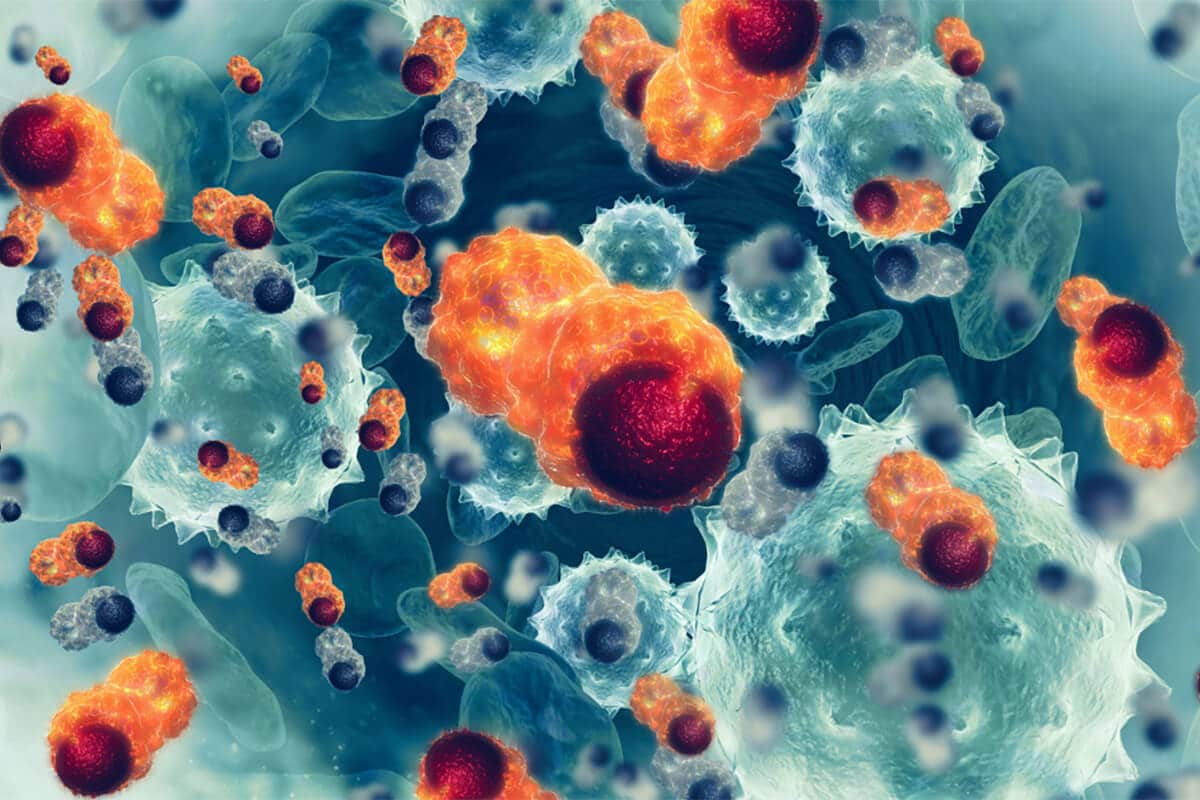New developments in the field of circulating tumor cells (2024)
Circulating Tumor Cells: From Basic to Translational Research – Cortés-Hernández et al
Although the potential of circulating tumor cells (CTCs) as prognostic agents is undisputed, up until recently, the limitations of isolating and studying them have hindered their use in real clinical applications. In the above article, which I summarize here, Cortés-Hernández et al focus on how in the present and future, researchers can produce more meaningful, applicable results that directly benefit human health, as the goal of translational research is to convert basic science discoveries more quickly and efficiently into practice.
The exploration of CTCs has yielded remarkable advancements, serving as representative entities of disseminating tumor subclones and liquid biopsy analytes, CTCs have deepened our comprehension of the metastatic cascade. Notably, CTCs have earned a place in the TNM staging system, enabling the stratification of metastatic breast cancer into stage IV indolent and stage IV aggressive disease based on CTC counts in the bloodstream. This integration underscores the prognostic significance of CTCs and their clinical utility in risk assessment (tumor staging) and monitoring responses to cancer therapies, leveraging properties such as minimal residual disease (MRD) detection.
CTCs and the Metastatic Cascade
The release of CTCs from the primary tumor marks a pivotal moment in the formation of metastases, highlighting the critical role these cells play in cancer progression. While metastasis-competent CTCs may originate from aggressive tumor clones, their ability to initiate metastases can also be influenced by various factors, including epigenetic modifications and alterations in the tumor microenvironment. These changes, involving processes such as the epithelial-mesenchymal transition (EMT), enable tumor cells to acquire migratory properties and enter the bloodstream. Interestingly, the manifestation of the EMT program can vary across different cancer types, with certain mutations, such as KRAS mutations in pancreatic cancer, predisposing cells to undergo EMT. Additionally, emerging evidence suggests that CTC numbers in the bloodstream fluctuate in accordance with circadian rhythms, though further research is warranted to elucidate the precise role of the circadian cycle in CTC release and metastatic potential.
Current methods for detecting CTCs primarily focus on identifying individual cells, yet recent findings underscore the significance of CTC clusters, which are associated with poorer prognoses. Understanding the interplay between CTCs and host cells in the bloodstream is crucial, as it contributes to the survival of CTCs—a pivotal step in metastatic progression. The formation of CTC clusters may impact extravasation, potentially increasing the likelihood of these clusters becoming lodged in small capillaries and initiating distant metastases. Intriguingly, research suggests that bacteria within CTC clusters can promote metastatic progression, as evidenced by studies in murine breast cancer models.
Central to the metastatic cascade is the ability of some CTCs to withstand biological and physical stresses in the circulation, to which only metastasis-competent CTCs are capable of. Despite advancements, identifying metastasis-competent CTCs within the heterogeneous pool of circulating cancer cells remains a significant challenge. A large amount of effort has been invested to the study of CTC expansion in vivo and in vitro, even though the generation of CTC lines and even the short-term expansion of CTCs are highly challenging. Nonetheless, through these experiments, it has been shown that CTCs that can grow in culture conditions are most likely to be metastatic-competent CTCs, and so far, their viability (“fitness”) remains the only universal marker of this CTC group.
These insights highlight the multifaceted nature of CTC biology and the complexities involved in metastatic dissemination.
CTC Clinical and Translational Studies
Prostate Cancer
For early stage nonmetastatic prostate cancer, the clinical utility of detecting CTCs remains uncertain due to their low counts in these patients. However, there are compelling associations between CTCs and localized high-grade prostate cancer, as well as elevated prostate-specific antigen (PSA) levels.
Higher CTC counts at diagnosis are linked to high-risk prostate cancer and the formation of metastases. Conversely, the absence of CTCs and CTC conversion following treatment initiation are strong predictors of overall survival, also, the number of CTC staying consistent during treatment strongly correlate with disease progression and worse treatment outcomes. Studies have demonstrated as well, that prostate biopsy can trigger the release of tumor cells into circulation, with post-biopsy CTC counts correlating with worse progression-free survival. Beyond mere enumeration, targeted transcriptome profiling of CTCs before initiating treatment holds promise for predicting therapeutic responses.
Lung Cancer
In early-stage non-small cell lung cancer (NSCLC), CTC enumeration from pulmonary vein blood samples revealed subclones associated with tumor relapse, independently predicting relapse even after adjusting for tumor stage. Genomic profiling showed similarity between single CTCs and later-detected metastases, while pre-radiotherapy CTC detection correlated with increased risk of nodal and distant recurrence. In metastatic NSCLC, CTC counts ≥2 and ≥5 per blood sample were linked to poor outcomes, with molecular phenotypes such as PD-L1 expression providing additional prognostic information. In small cell lung cancer (SCLC), CTC detection rates are high, with baseline CTC count and changes after chemotherapy serving as independent prognostic factors for progression-free and overall survival.
Breast Cancer
In breast cancer, CTC count at diagnosis strongly correlates with relapse, underscoring the importance of circulating, malignant cell survival for metastasis development. Studies in metastatic breast cancer demonstrate that ≥5 CTCs per 7.5 mL of blood are associated with shorter overall and progression-free survival, validating CTC enumeration clinically. Characterization of CTCs based on gene expression and mutation analysis, along with phenotypic assessment, can identify minimal residual disease (MRD) years before clinical metastasis detection. While early clinical trials showed mixed results, recent studies like the STIC-CTC trial highlight the evolving role of CTCs as independent biomarkers in breast cancer management.
Colorectal cancer
In colorectal cancer (CRC), while the clinical utility of CTC detection is yet to be fully established, a cutoff of ≥3 CTCs per 7.5 mL of blood predicts poorer progression-free and overall survival. Studies have shown that CTC presence before surgery in nonmetastatic CRC is associated with adverse outcomes, while post-surgery detection may indicate recurrence risk and MRD persistence, these patients may benefit from adjuvant chemotherapy. Moreover, baseline CTC count correlates with clinicopathologic features in metastatic CRC, and CTC monitoring during treatment offers valuable prognostic insights, highlighting their potential as biomarkers for therapy selection and disease monitoring.
Conclusion
From the review article a comprehensive image can be gained of how circulating tumor cells contribute to the metastatic cascade, with a pivotal role of metastasis-competent CTCs, emphasizing the significance of characterizing these cells as initiators of metastasis. Within multiple cancer types, where CTCs can be reliably observed, improvements have been made to translate basic research into available practices which guide treatment paths. All in all, CTCs carry a high clinical predictive value, as biomarkers of bloodstream surveillance, and once limitations hindering wide-scale use have been overcome, can be fully realized to guide treatment decisions and benefit patients in a deeply involved way.
Recent blogs
A New Era in Liver Cancer Detection: The Promise of HepaAiQ
In this blog entry, we will explore the recent history, intriguing findings, and tools related to cfDNA fragmentomics.
Cell-free DNA Fragmentomics: A Promising Predictor of Cancer
In this blog entry, we will explore the recent history, intriguing findings, and tools related to cfDNA fragmentomics.
Singlera technologies 5: Panseer – detecting pan-cancer signatures years before conventional diagnosis
In the last blog of the year and the concluding chapter of the Singlera series, we are going to explore PanSeer, a blood-based screening test utilizing unique methylation signatures.




